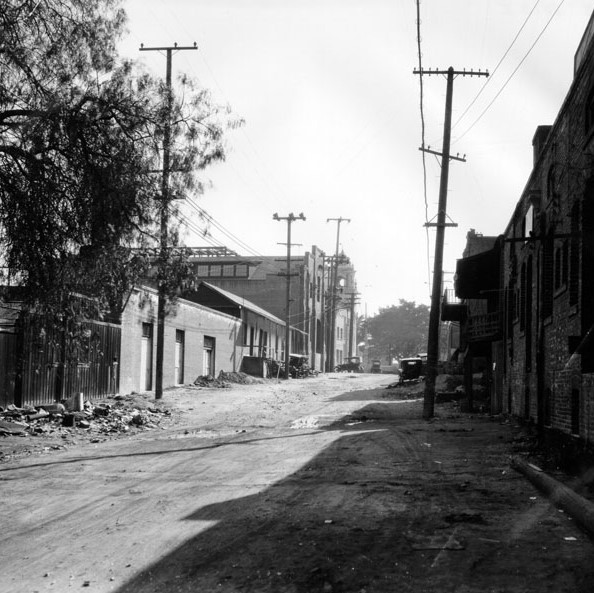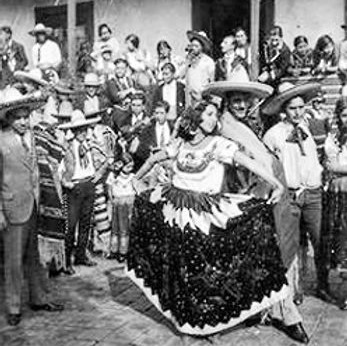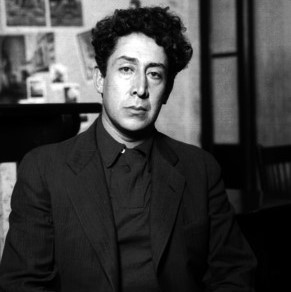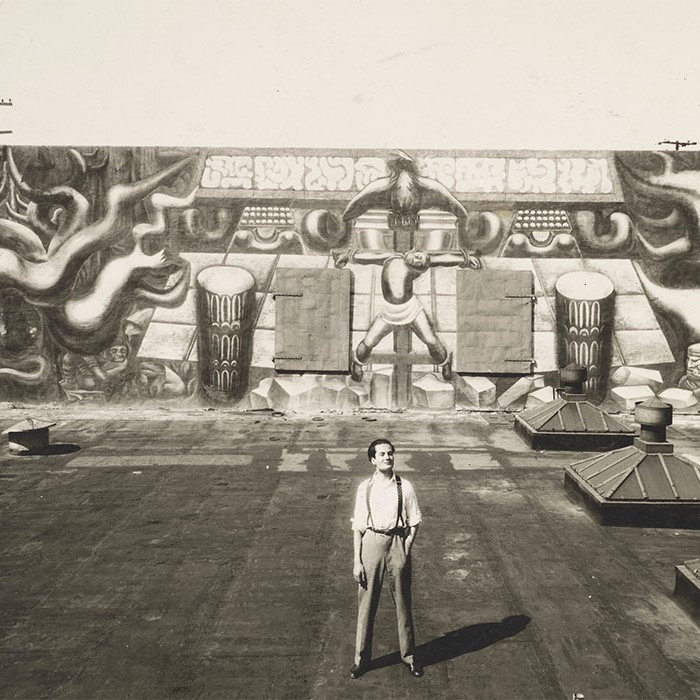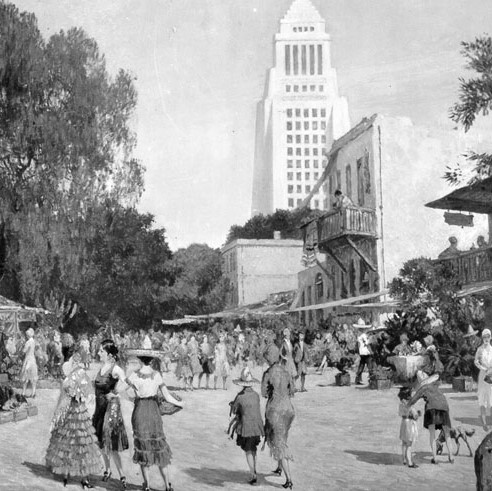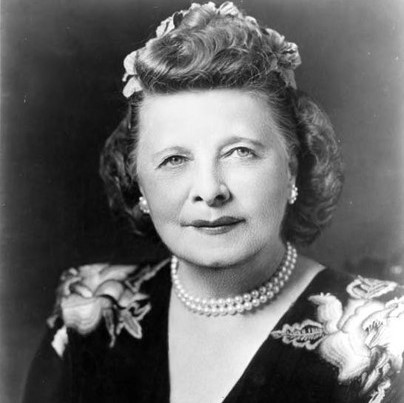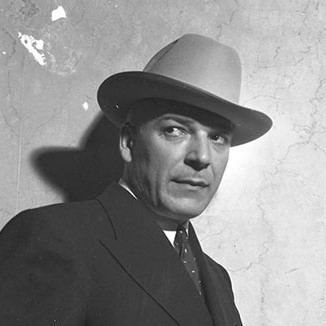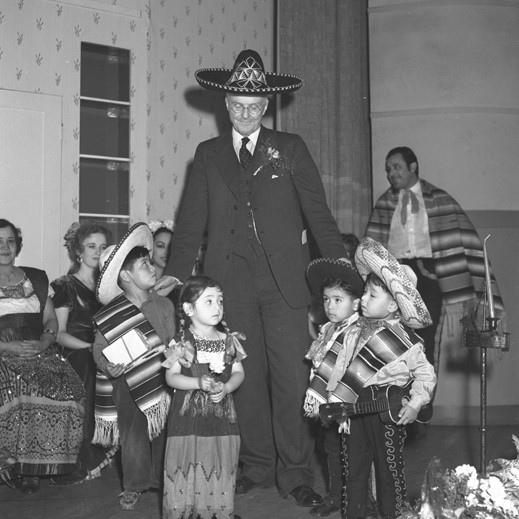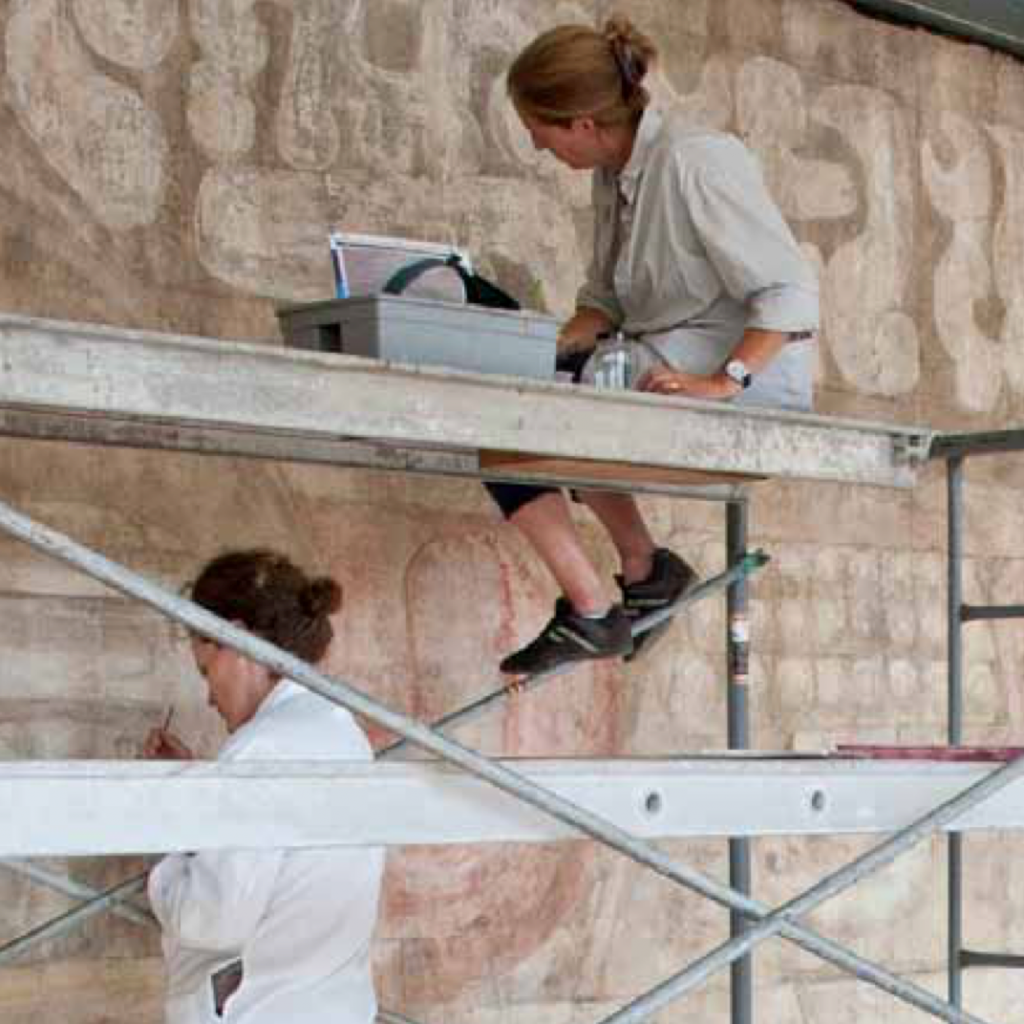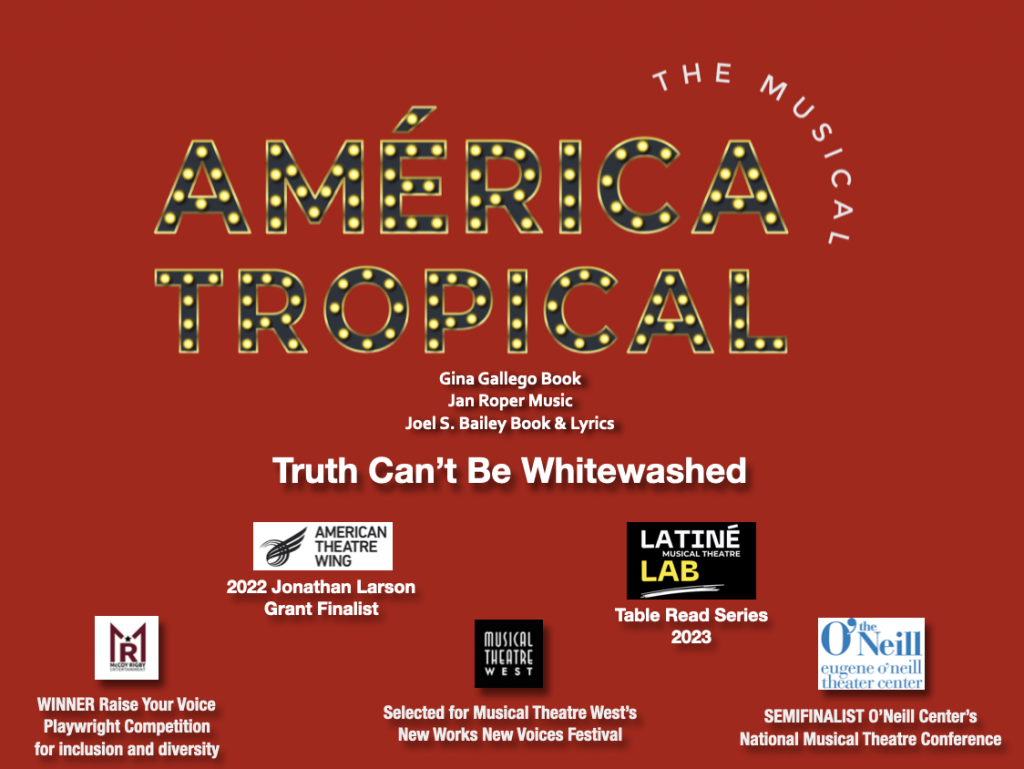Angered and saddened by the LAPD raid on her neighborhood and deportation of her father, Rita takes to the small stage inside the speakeasy to voice her discontent through song. She is joined by the Hot Tamale Dancers, Cha Cha and Gert.
América Tropical tells the universal story of a family fighting to stay together against forces intent on tearing them apart. Rita Rey, a young Mexican American, must save her family against Repatriation, the Depression-era policy where US citizens of Mexican ancestry were deported. Based on real people and events, our heroine uses her wits to outsmart a corrupt cop to get her family back. The show’s title comes from a controversial mural created by Rita’s love interest, David Siqueiros, the famous Mexican artist and communist revolutionary. América Tropical, the mural, is whitewashed but decades later manages to re-emerge, a metaphor for the resilience of Mexican Americans. In the end Rita understands the truths revealed in Siqueiros’ mural cannot be whitewashed or covered up, and América Tropical still speaks powerfully of acceptance and equality. The writers are mindful that audiences, particularly in a post-pandemic world, want to be entertained not lectured to. While the underlying themes in América Tropical are vital, the overarching tone is upbeat and lively—similar to Cabaret and Chicago.
